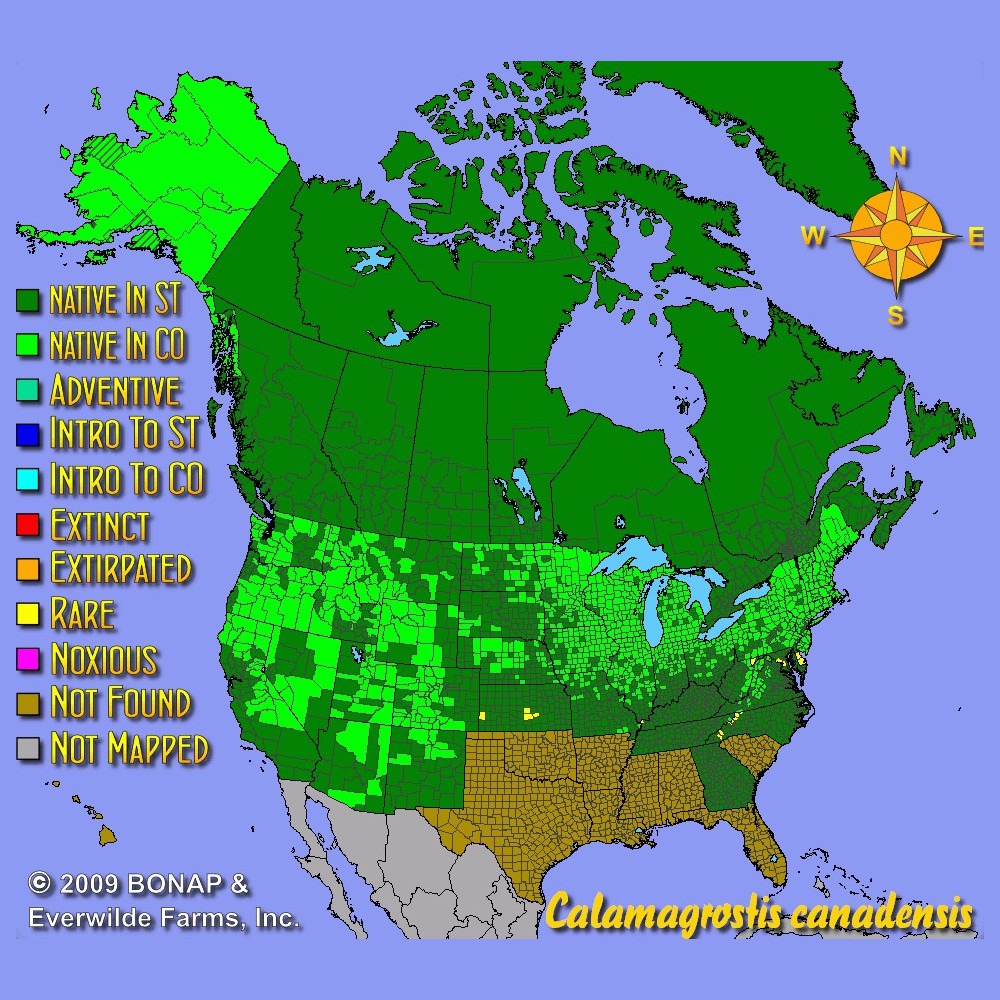Blue Joint Grass Seeds
- HOW TO GROW
- FAST FACTS
- REVIEWS
HOW TO GROW
Sowing: Direct sow blue joint grass seeds either in late fall or early spring. Plant Calamagrostis Canadensis seeds just below the surface of the soil, compacting the soil very firmly. Keep the soil lightly moist until germination, since this seed cannot germinate in dry soil.
Growing: Water seedlings regularly until they become established. This plant thrives in rich, moist soil, even flourishing in seasonal flooding. Once established, however, it adapts to a variety of soil conditions and tolerates some drought. This plant grows quickly, spreading by shallow rhizomes. It makes an excellent choice for controlling erosion or strengthening stream banks, and attracts birds.
Seed Saving: Keep in mind that the seed production of this species can be low and difficult to harvest. Cut the seed heads from the plant at the end of the season; mature seed will be brown. Spread the plant material out to dry. Thresh to separate the seed from the stems, and store blue joint grass seeds in a cool, dark place.
FAST FACTS
Common Names: Blue Joint Reed Grass,Canadian Reedgrass, Marsh Pinegrass, Meadow Pinegrass
Latin Name: Calamagrostis canadensis
Species Origin: US Native Grass or Sedge
Type: Native Grasses, Cool Season
Life Cycle: Perennial
USDA Zones: 1, 2, 3, 4, 5, 6, 7, 8, 9, 10
US Regions: California, Mountain, Arid/Desert, Plains/Texas, Midwest, Northern, Northeast
Seeds per Ounce: 187,000
Stratification: No Stratification
Germination Ease: No Stratification
Sunlight: Full Sun, Part Sun
Height: 48 Inches
Color: Green, Brown
Bloom Season: Blooms Early Summer, Blooms Late Summer
Question
Hello, I wanted to buy calamagrostis seeds, what species do they have? And at what price?
To send to an address in Florida
Thank you
Nadine
DESCRIPTION

HOW TO GROW
Sowing: Direct sow blue joint grass seeds either in late fall or early spring. Plant Calamagrostis Canadensis seeds just below the surface of the soil, compacting the soil very firmly. Keep the soil lightly moist until germination, since this seed cannot germinate in dry soil.
Growing: Water seedlings regularly until they become established. This plant thrives in rich, moist soil, even flourishing in seasonal flooding. Once established, however, it adapts to a variety of soil conditions and tolerates some drought. This plant grows quickly, spreading by shallow rhizomes. It makes an excellent choice for controlling erosion or strengthening stream banks, and attracts birds.
Seed Saving: Keep in mind that the seed production of this species can be low and difficult to harvest. Cut the seed heads from the plant at the end of the season; mature seed will be brown. Spread the plant material out to dry. Thresh to separate the seed from the stems, and store blue joint grass seeds in a cool, dark place.
FAST FACTS
Common Names: Blue Joint Reed Grass,Canadian Reedgrass, Marsh Pinegrass, Meadow Pinegrass
Latin Name: Calamagrostis canadensis
Species Origin: US Native Grass or Sedge
Type: Native Grasses, Cool Season
Life Cycle: Perennial
USDA Zones: 1, 2, 3, 4, 5, 6, 7, 8, 9, 10
US Regions: California, Mountain, Arid/Desert, Plains/Texas, Midwest, Northern, Northeast
Seeds per Ounce: 187,000
Stratification: No Stratification
Germination Ease: No Stratification
Sunlight: Full Sun, Part Sun
Height: 48 Inches
Color: Green, Brown
Bloom Season: Blooms Early Summer, Blooms Late Summer
Reviews
Review
Question
Hello, I wanted to buy calamagrostis seeds, what species do they have? And at what price?
To send to an address in Florida
Thank you
Nadine





